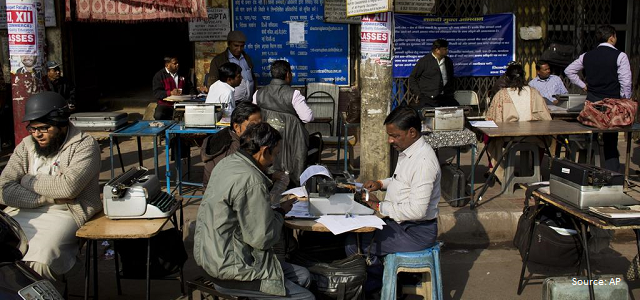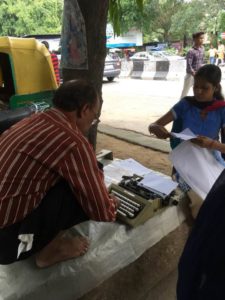This month, the Union Government of India compulsorily retired nearly 30 officers of the Indian Revenue Service, on charges ranging from corruption to sexual harassment. The media termed this as a crackdown on corruption and the beginning of a war to reduce corruption.
The question is whether such a conclusion has any substance.
I believe that it is too early to say.
Crackdowns on corruption, if they are indeed crackdowns, comprise many more tectonic shifts apart from the sacking of a few officers. Yet, even though the action of the government is not unprecedented – Rule 56 of the General Financial Rules of the Government, which has provided for compulsory retirement of officials has been used often by past governments too – the number of officers currently retired is a large one and worthy of being specially noticed.
One of the salient features of the current round of compulsory retirements is that it targets one department, the Revenue Service. While the Service may suffer disquiet because of this focus on it – there are many honest officers in the Taxation system and they may feel a loss of morale – it also has to be recognised that Tax departments are especially corruption prone. Therefore, the choice of the department as the focus of a group sacking of officers is a good one. The government proposes to widen the net and identify corrupt and inefficient officers in other departments too. That is indeed something that will send the right signal to the bureaucracy.
Experience shows that crackdowns on the corrupt have to be sustained and must deliver a shock. A celebrated and oft quoted instance of mass action on the corrupt is that led by Hong Kong’s then governor, Sir Murray MacLehose. Hong Kong underwent an explosion of corruption in the 1960s and 1970s, fueled by vibrant economic growth and lax rules. The police and public works department were seriously affected by the malaise, so much so that new recruits were openly invited to join in the loot. ‘Either board the bus, or walk alongside, but don’t stand in front of it’, they were advised, in a thinly veiled warning.
Bribes, known as ‘tea money’, were openly collected and channelised through a well organised network with its internal rules on sharing; who got how much, when, where and in what form. MacLehose hit high, wide and hard. The former police chief superintendent Peter Fitzroy Godber, who had transferred his ill-gotten wealth to bank accounts across the world used his special pass to bypass customs and left the country. He was extradited from his home in London, tried, convicted and sentenced to a jail term. The initial focus of MacLehose was on the police and its entrenched system of hafta collection in police stations. The system was so open that each police station has a dedicated room for a ‘collector’ who advised clients to buy bank drafts through which they could send their bribes to overseas bank accounts. In the Yau Ma Tei fruit market case, a heroin racket in West Kowloon in 1976, so many officers were arrested that the local police station was nearly empty.
The police hit back, resenting the dramatic drop in their incomes. In 1977, police officers stormed Hong Kong’s Independent Commission Against Corruption and attacked staff. This led to MacLehose resorting to a bold and unconventional move. He offered a partial amnesty to officers involved in corruption prior to 1977, while still pursuing serious cases. The police felt they were given a second chance and they began to transform themselves. The ICAC turned to systems reforms that reduced discretion, increased transparency and ensured stricter control over corruption prone transactions in the government. This was a highly effective strategy and corruption was choked and diminished.
Experience shows that crackdowns on the corrupt have to be sustained and must deliver a shock.
Considering the tortuous steps taken in other countries to reduce corruption, we need to be a little careful, if not downright skeptical about mass actions such as the recent spate of compulsory retirements. One needs to remember that the government is full of intrigue, concealed and not so concealed antagonisms and rivalries. Honest officers will rile others and those thwarted from corruption will bide their time and seek revenge. It is not beyond the realm of possibility, indeed it is inevitable, that the very same tools of crackdowns could be misapplied to target honest officers. When the situation escalates to hyper corruption even honest officers don’t remain safe. That was a worry and continues to be one even now. Furthermore, if the agencies that catch the corrupt are themselves dishonest, then the solution could be worse than the disease.
Compulsory retirement ought not to become a way to divert attention from the original offence of the official concerned. Many officers who have been compulsorily retired are accused of serious offences ranging from corruption to sexual harassment. Is the compulsory retirement the end of the story? If that is the case, then they are getting off lightly. The substantive charges must be pursued.
There is another important point to be kept in mind when judging mass actions against corruption. There is always the lurking danger that strictness is applied unevenly. When policy corruption and state capture happens at a high level, then smart politicians can actually reduce petty corruption that impacts citizens directly and earn a good name, even as corruption continues in a centralised fashion. This affects the citizen indirectly but the citizen does not know. Out of sight is out of mind. Citizens can labour under a false impression that corruption has been eliminated when it happens at a higher level, and they face the effects indirectly and over time.
We need to be vigilant that the current ‘war’ against corruption does not suffer from these infirmities.
This blog is part of a series. The first blog can be found here.













